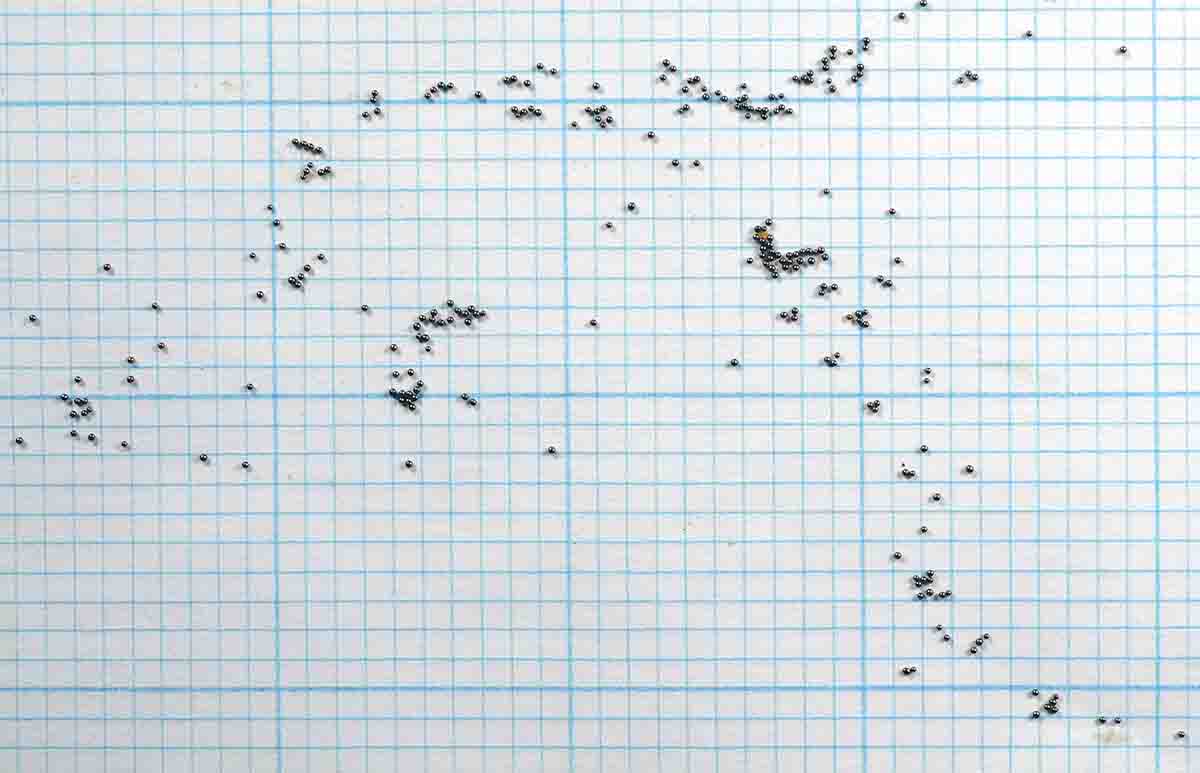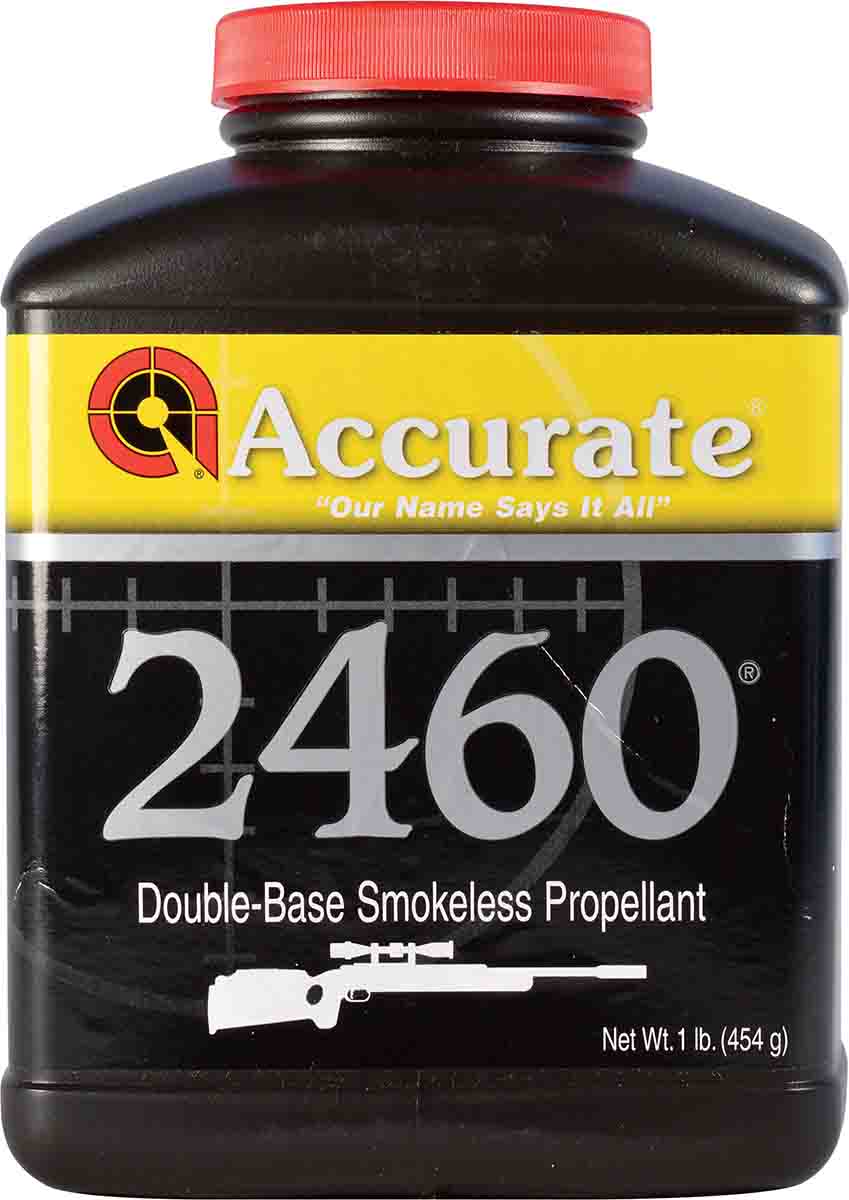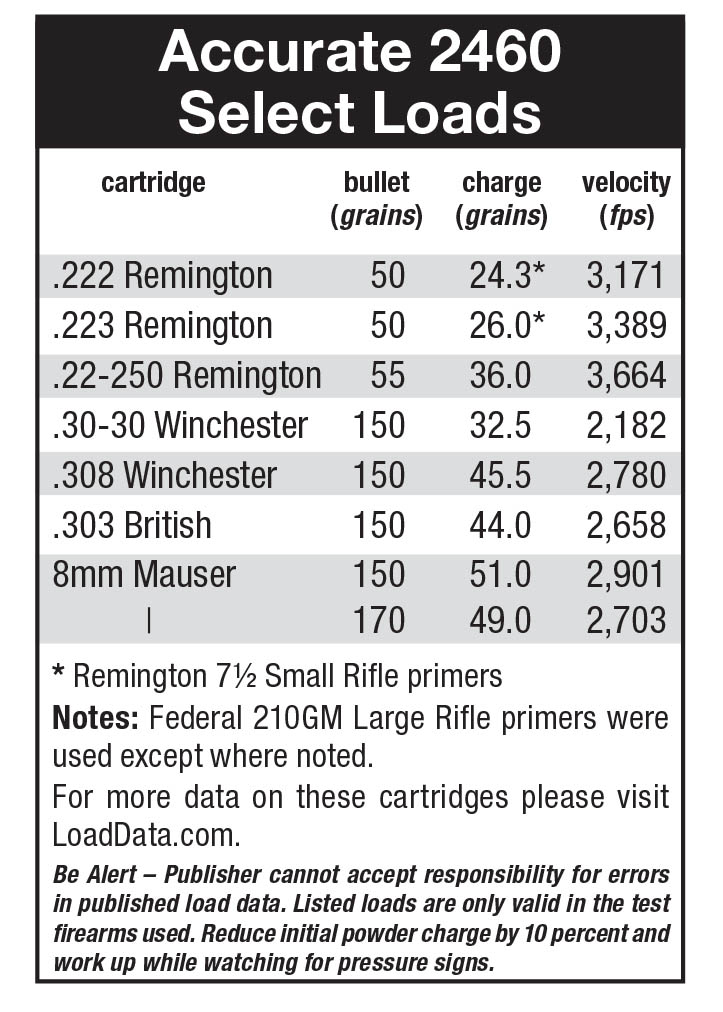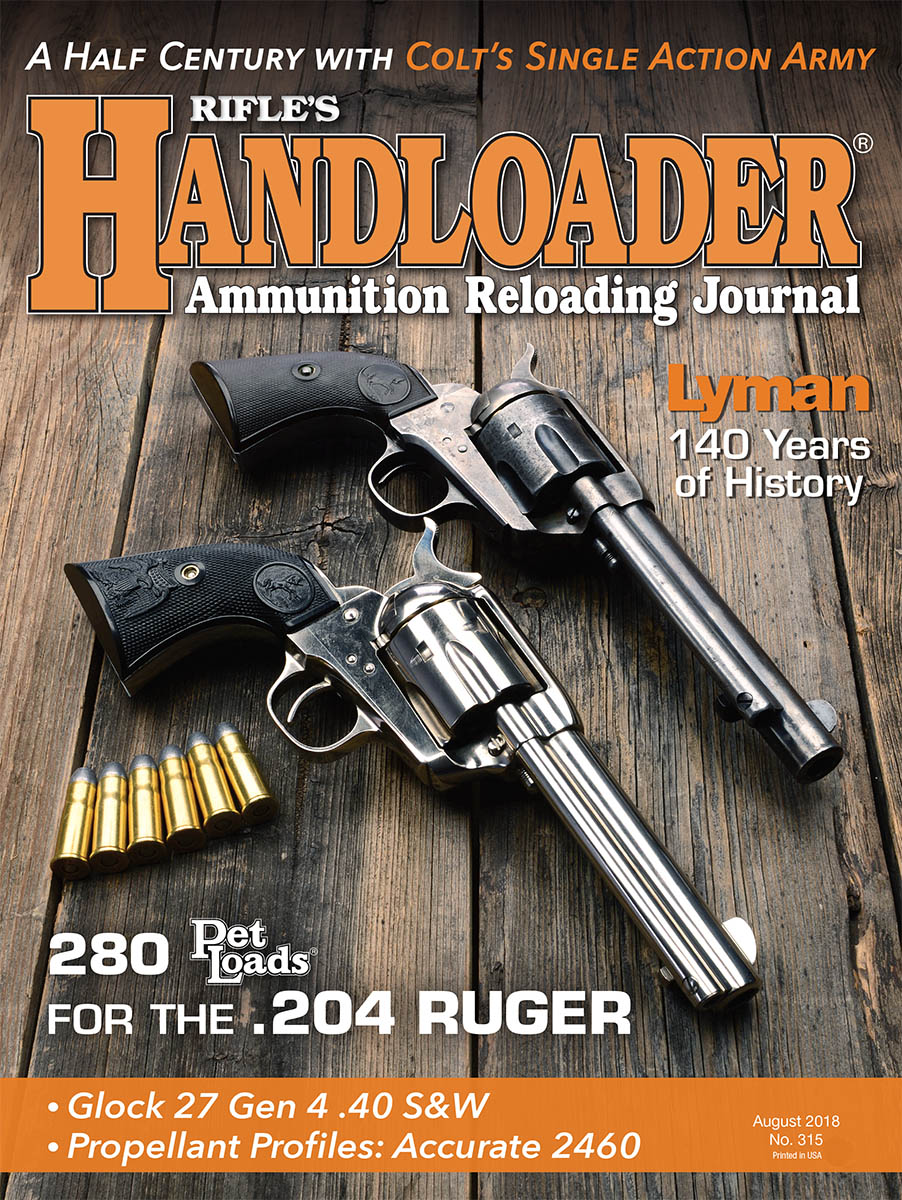Propellant Profiles
Accurate 2460
column By: R.H. VanDenburg, Jr. | August, 18
Over the past year this column has been used to review Accurate Powder Company’s double-base spherical powders that have been moved from their European source back home to the U.S. and are now manufactured in Florida by St. Marks Powders. Included in the move were Accurate 2230, 2460 and 2520, along with Ramshot X-Terminator.
The Accurate Powder Company, formerly a part of Accurate Arms of McEwen, Tennessee, has been a part of Western Powders

When A-2230 and A-2520 were reviewed in recent issues, the one thing that stood out was that in each case the St. Marks versions were very slightly slower burning than their Belgium-made predecessors. In the case of A-2460, comparing an older lot on hand made in Belgium to the new St. Marks Powders lot just received, the two lots appear to perform similarly, with the new lot being a few feet per second slower; not enough, certainly, to not follow Western’s published load data precisely.
Specifically, Accurate 2460 is a double-base, spherical powder with a nitroglycerin content of 10 percent. Its diameter is listed as .022 inch, the same as A-2230 and A-2520. Bulk density is given as .990 g/cc. The burning rate, according to Western, is a tick slower than IMR-3031 and similar to, or slightly faster than, Hodgdon BL-C(2), Winchester 748 and Vihtavuori N133.
In perusing the new Western Powders Handloading Guide, Edition 1, I found 37 cartridges paired with Accurate 2460, from the .17 Remington Fireball to the .458 Winchester Magnum. As so often happens, the list of cartridges varies a bit from earlier manuals in places, dropping a cartridge here and picking up one there. Still, the list is impressive. All of the loads listed here are within Western’s published parameters.
When reviewing A-2460 a decade ago, six cartridges were highlighted. This time I’ve selected seven, adding two and dropping

Moving up to a popular hunting cartridge, the .30-30 Winchester, in a Model 94 with a 20-inch barrel, 32.5 grains under a Speer 150-grain bullet almost matched the previous effort with the same components. Earlier I had recorded 2,192 fps; this time velocity was 2,182 fps. That’s close enough. This is a pretty good combination, although slightly faster powders may produce higher velocities. I wouldn’t ignore this one without trying it. In another popular cartridge, the .308 Winchester, published maximum powder charges for 150-grain bullets have increased a little bit, as did my listed load, up .5 grain from my previous report. This time, with 45.5 grains under a Sierra 150-grain bullet, I found a most pleasant load that was consistent and accurate. For heavier bullets I’d go with a slower powder. Earlier manuals hinted at using A-2460 with light bullets in the .30-06. This time there is no such pairing, a decision I support.
In previous manuals A-2460 was not used in the .303 British. This time data appears for 125-, 150- and 180-grain bullets. For deer-sized game I often select a Sierra 150-grain spitzer, so that is what I worked with here in a Ruger No. 1 with a 22-inch barrel. Results were a bit off Western’s 24-inch barrel data but were certainly within any requirement for short- to moderate-range hunting. For heavier bullets A-2520 is likely a better choice.
One of the cartridges I enjoy hunting with is the 8mm Mauser. I have two: a WWII-era Model 98K Mauser and a modern Remington Model 700 Classic. The Mauser is stock and in excellent condition. I tricked-out the Remington with a Timney trigger and a replacement Remington firing pin assembly. The changes are definite improvements both in trigger control and lock time. In the last A-2460 review I listed only a 170-grain bullet. This time I added one of 150s as that is the weight I generally use. If using these loads in the Mauser, I would probably throttle the powder charges back a grain or two in deference to the rifle’s age and unknown heat-treating provenance. In the Mauser, modest loads, often with cast bullets, serve nicely.

In the previous review I lamented the absence of .45-70 data with A-2460. In researching Accurate’s literature I’ve not found any listing of the powder in this cartridge, but since it is, for all intents and purposes, a slightly slower version of A-2230, it seemed as if it might work. To this end I found a load of 49.0 grains under a Sierra 300-grain HP duplicated the old Winchester Hi Power load of 1,880 fps in a Marlin 1895 Cowboy with a 26-inch barrel. I don’t shoot this load often as the Marlin only weighs 7.25 pounds, but it certainly worked. My typical Marlin loads contain cast bullets at traditional trapdoor velocities – quite pleasant to shoot.
In reviewing Accurate data I noticed that Western has reduced its A-2230 maximums with 300-grain bullets in the .45-70 cartridge. I assume this was done as a result of improved laboratory pressure-testing techniques being developed, and it seems prudent to cut back that 49.0 grain load with A-2460 to 47.0 grains; still not a bad load, but slightly slower. Different rifles may react differently to the change, but in this case accuracy remained the same and recoil was reduced a bit – not a bad tradeoff.
Western refers to A-2460 as a derivative of its notable A-2230. An opportunity to fine tune good loads and make them better is how the company expressed it. I suspect this is a good way to look at A-2460: not necessarily a needed powder, but one that can help to improve some A-2230 loads. Once tried, a handloader may wonder how he ever did without it.


